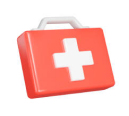Uses
What is Kaletra for?
Kaletra contains Lopinavir, an antiretroviral agent that makes viruses less infectious. It is used to decrease the amount of viruses (viral load) to as low as possible, for as long as possible. It also contains Ritonavir that enhances action of Lopinavir.
How should I take or use Kaletra?
Kaletra is usually taken twice daily. It is usually given in combination with other antiretroviral agents, to achieve significant decrease in viral multiplication.
Kaletra oral solution should be taken with food. High fat meal increases absorption.
Kaletra tablets can be taken with or without food
If you or your child is taking Kaletra together with Didanosine, administer them at least two hours apart from each other.
Do not cut or crush the tablets as this might reduce the efficacy of the medicine.
What should I do if I forget to take or use Kaletra?
Missing doses makes Kaletra less effective and may also make the virus resistant to Kaletra and other possible antiretroviral agents.
If you forgot to administer the medication within 4 hours, take the dose as soon as you remember and then continue to take it as per normal. Otherwise, skip the missed dose and take the next dose at the usual time. Do not double or increase the dose.
If you or your child vomits within 15 minutes of administration, take another dose if possible.
Side Effects
What are some common side effects of Kaletra?
Nausea and vomiting are common, and may be prevented by eating small frequent meals or sucking on candy. Headaches and pain can be alleviated with mild painkillers e.g. paracetamol. Other common side effects are diarrhoea, rash, dizziness, feeling tired/weakness and difficulty in sleeping.
Inform your doctor if the side effects become severe and bothersome.
Handling
How should I store Kaletra?
- Keep away from children
- Keep in a cool, dry place, away from direct sunlight
- Tablets should be stored in its original container at room temperature, away from heat and light. Syrup preparation should be refrigerated (2ËšC - 8ËšC). If stored at room temperature (<25ËšC), the syrup should be used within 2 months.
For more information
What else should I know about Kaletra?
Some medication may reduce its efficacy, or increase its toxicity. Do not take any other medications or herbal products without first consulting your doctor.
Disclaimers
If you take more than the recommended dose, please seek medical advice immediately. The information provided on this page does not replace information from your healthcare professional. Please consult your healthcare professional for more information.
This article is jointly developed by members of the National Medication Information workgroup. The workgroup consists of cluster partners (National Healthcare Group, National University Health System, and SingHealth), community pharmacies (Guardian, Unity, and Watsons), and the Pharmaceutical Society of Singapore. The content does not reflect drug availability and supply information in pharmacies and healthcare institutions. You are advised to check with the respective institutions for such information.
Contributed by
Last Updated on September 2017

Need More Medicine?
Use Medicine Order Service on HealthBuddy.

Medicines Reminder
Get reminders and chart progress on HealthBuddy.




















